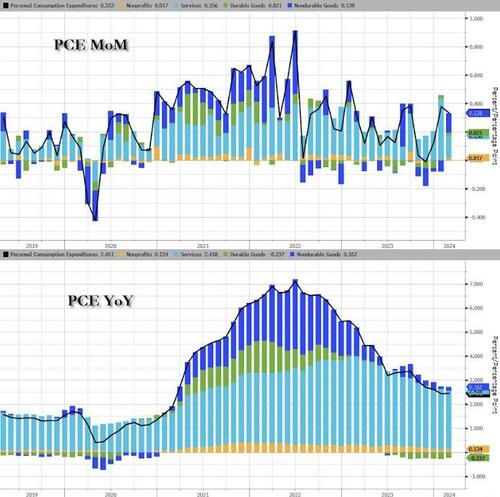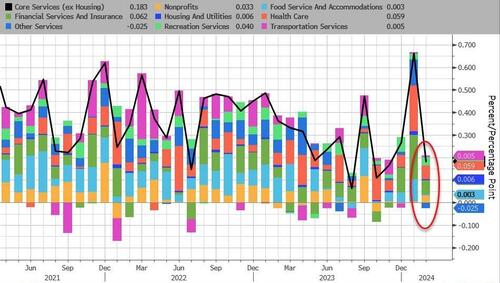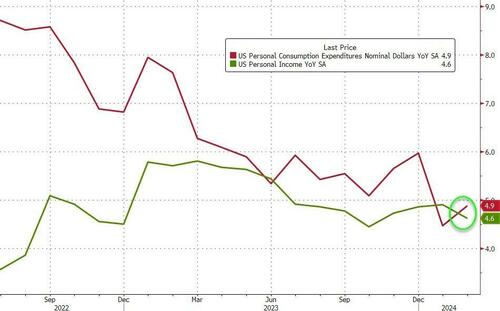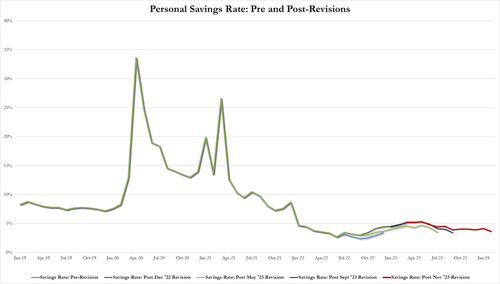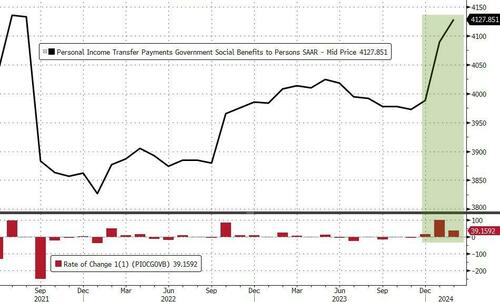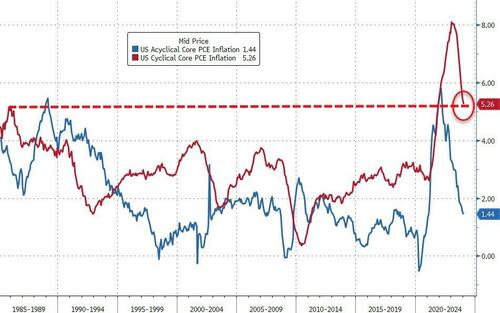Disinflationary Path Stalls As Non-Durable Goods Prices Spike But Supercore PCE Slides
One of The Fed’s favorite inflation indicators – Core PCE Deflator – was flat at +2.8% YoY in February (as expected) – the lowest since March 2021.
However, the headline PCE Deflator stalled its disinflationary path, rising to +2.5% YoY (from +2.4%)…
Source: Bloomberg
Durable Goods deflation slowed and non-durable goods inflation picked up in February…
Source: Bloomberg
The so-called SuperCore – Services inflation ex-Shelter – remains stalled around +3.33% YoY (up 0.18% MoM)…
Source: Bloomberg
But SuperCore MoM tumbled significantly (as Healthcare cost inflation fell and Other Services prices deflated)…
Source: Bloomberg
Income and Spending both rose in February with spending far outpacing income (+0.8% MoM vs +0.3% MoM respectively)…
Source: Bloomberg
On a YoY basis, spending is once again outpacing income growth…
Source: Bloomberg
Government workers’ record wage growth in January was revised lower (because we caught them)…
-
Govt wages grew 8.1% in Feb, up from a downward revised 7.9% in Jan and below the record high of 8.9% in December
-
Private wages grew 5.4% in Feb, up from 5.3% in Jan and back to their pre-covid growth rates
As one would expect with that level of spending, the savings rate collapsed to its lowest since Dec 2022…
Source: Bloomberg
Here’s why – government handouts rose significantly once again (+$39BN MoM)…
Source: Bloomberg
Finally, while the markets are exuberant at the survey-based disinflation, we do note that it’s not all sunshine and unicorns. The vast majority of the reduction in inflation has been ‘cyclical’…
Source: Bloomberg
Acyclical Core PCE inflation remains extremely high, although it has fallen from its highs.
Is The (apolitical) Fed really going to cut rates 4 times this year with a background of strong growth (GDP) and still high Acyclical inflation?
Tyler Durden
Fri, 03/29/2024 – 08:47
via ZeroHedge News https://ift.tt/Obs5QFU Tyler Durden

